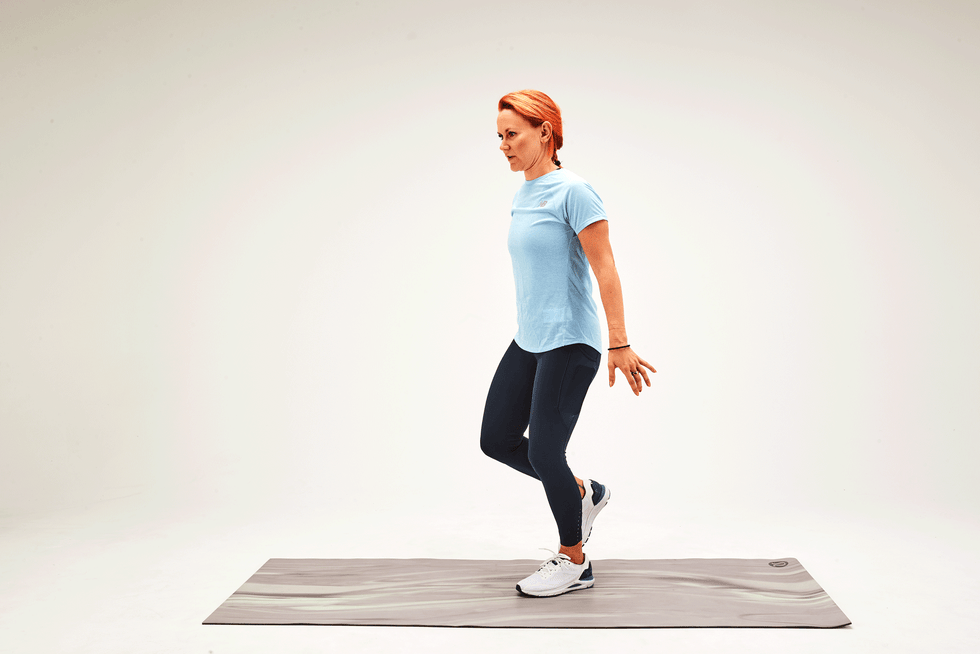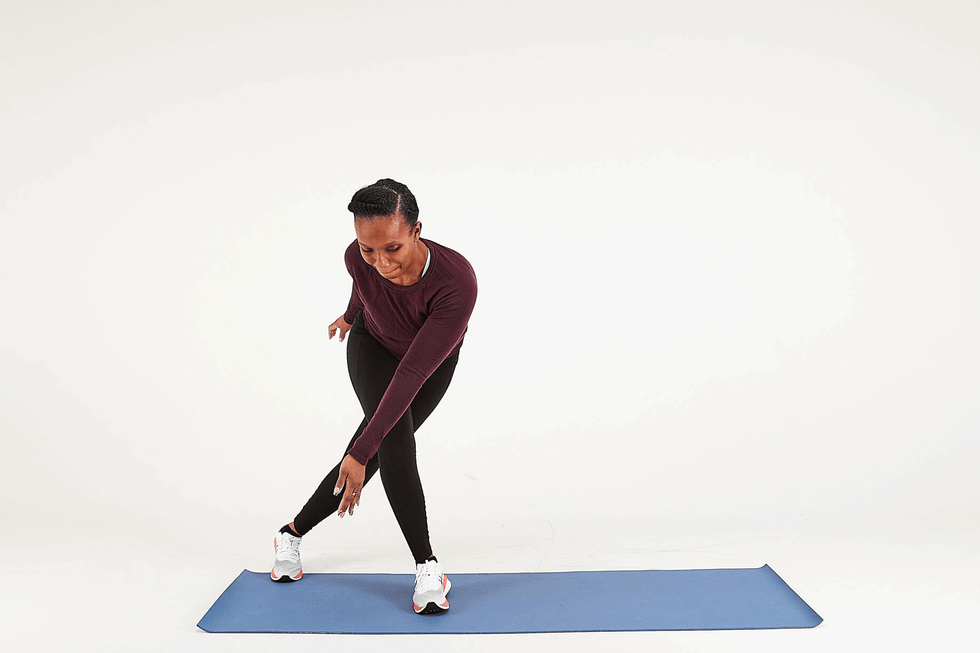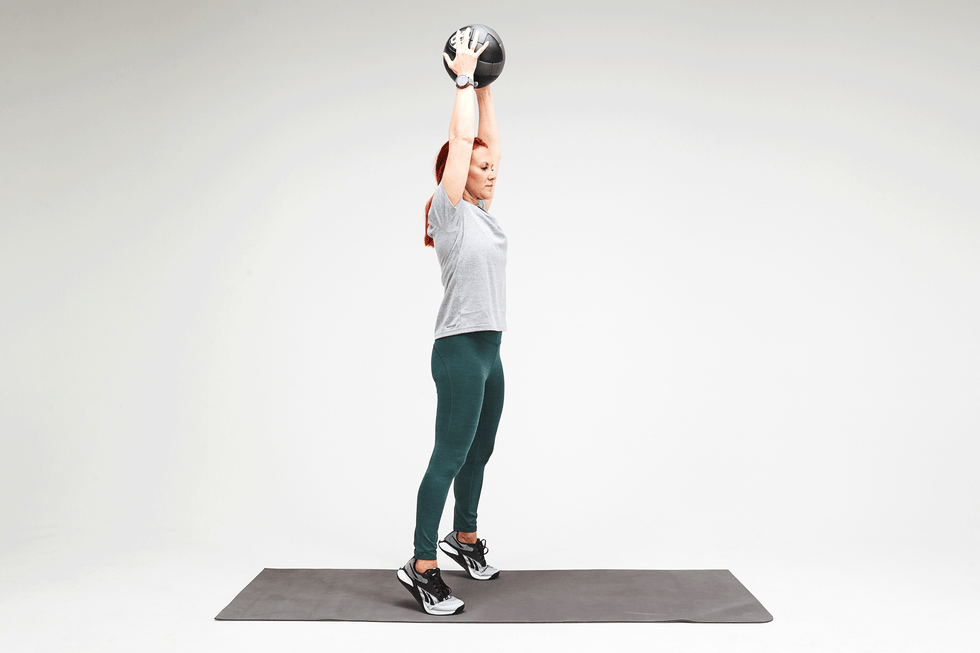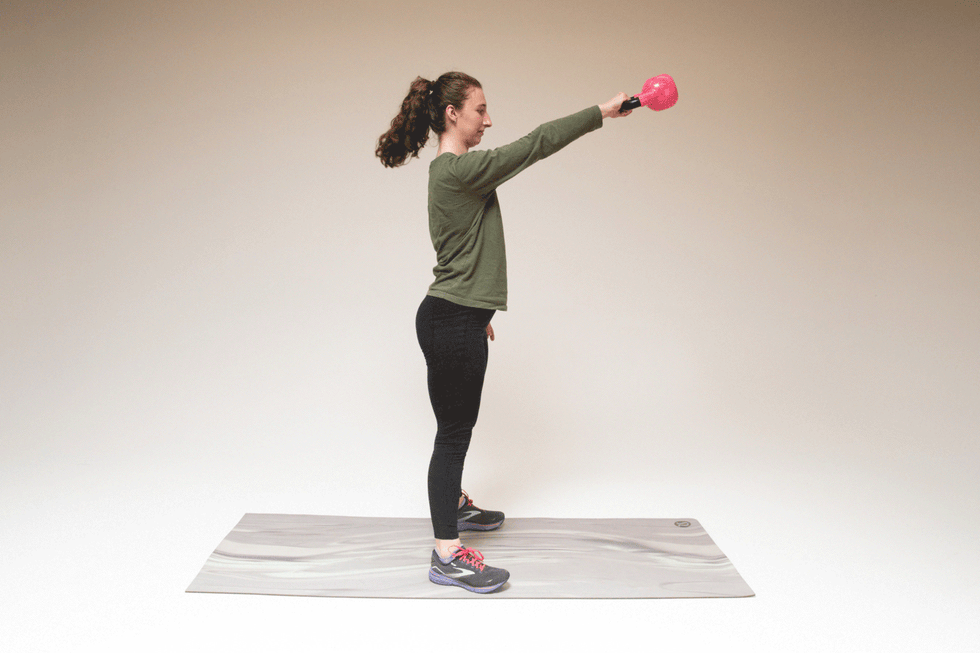Power might not be a word you think of often when it comes to your running routine. The bulk of most runners’ schedules is made up of miles covered at an easy pace, so working on your muscular power might not seem like it’s worthy of your priority list.
To kick your running performance up a notch, though, taking your running and strength workouts into power territory could be just what you need.
Related Story
“We don’t think often about power training in endurance athletes, but there’s definitely a correlation,” says Mary Johnson, a running and strength coach in New Haven, Connecticut, and founder of Lift Run Perform. “Power training is emphasizing the explosive force during your running stride. It’s about being quicker and more efficient in how you apply force to the ground—and of course endurance athletes want to be better at that.”
For the full scoop on what power training means and how to add it to your schedule, read on.
The Benefits of Building Muscular Power vs Strength
Working on amping up your power can help boost so many aspects of your performance. Running is a single-leg sport, and the more power you can put behind every step, the stronger of a runner you’ll become, says Jill Becker, a personal trainer and run coach at Life Time in Westminster, Colorado.
Specifically, building muscular power can boost all these aspects of your running:
- Faster stride
- Improved running form
- Stronger finishes
- Better climbing ability
- Potentially lower chance of injury
“The more powerful we are, the most we can delay fatigue during races,” says Johnson.
Muscular power differs from muscular strength in that it focuses on producing force quickly. In fact, you can think of it as a marriage between strength—the amount of force you can generate—and speed. Of course, this pays off for runners who want to kick up their pace.
Related StoryWhy You Should Focus on Power After You Build Strength
You don’t have to be gearing up for a race of a certain distance or be running a specific number of weekly miles to benefit from focusing on power. That said, Becker and Johnson agree that it’s really only worth incorporating into your schedule if you’re a fairly experienced runner and already have a good strength-training base.
“Unless you have a really solid muscular base, layering on other things like power exercises might not be the best use of your time,” says Johnson. That’s because without adequate aerobic fitness, strength, and mobility in place, you likely won’t be able to power through the short bursts of running and/or dynamic strength moves (like plyometrics) with enough force to reap noticeable gains.
“It’s like speedwork in running—if you don’t have a good foundation, you probably shouldn’t be going to the track and slamming down 800s,” explains Johnson. “Are you going to be fine if you do that once or twice? Yeah, but the body needs to be prepped for the work that gets layered onto it.”
Instead, Johnson recommends building a good foundation of strength in between seasons—and only once you have it, layering on power through running workouts or lifting or both later on.
Becker also mentions the importance of mobility as you’re weaving in power training. “Consistently practicing mobility—especially of your feet, ankles, and hips—will help prevent injuries when the intensity increases,” she says. “And heading into a power-training phase, you want to be injury free.”
Finally, power-based strength exercises are definitely more advanced. You want to have solid form down on basic moves before progressing.
Related StoryHow to Build Muscular Power in Your Strength Workouts
The best ways to pump up your power in the gym are via Olympic weightlifting (think: power cleans and snatches) and plyometrics (like box jumps and single-leg hops).
Because you need a really solid strength foundation before doing Olympic lifts and to have the technique down to gain the benefits and avoid injury, Johnson advises working in plyo moves first, starting with 2 to 3 sets of 4 to 6 reps. Becker’s a fan of plyometrics too, advising that you always “focus on speed and quality” to get the most out of them.
Remember: Before you progress to these moves, you should be able to do exercises like calf raises, squats, deadlifts, and lunges with confidence.
Try adding in lower-intensity exercises such as these twice a week:
Single-Leg Hop
Trevor Raab
How to do it
- Stand on right leg, arms down by sides. Bend left knee and hip to hold foot off ground in front of you.
- Drive arms back, bend right knee slightly, and explode up, hopping off the ground on right foot.
- Land softly.
- Repeat for reps.
- Then switch sides.
Skater
Trevor Raab
How to do it
- Stand with feet hip-width apart, knees bent into a slight squat.
- Push off right foot, to hop laterally to the left, landing softly to lower onto left heel and bend into a partial squat, right leg coming behind and across body.
- Now push quickly off left foot to hop back to right side, landing softly and bending right knee, left leg coming behind and across body. Keep knees over toes and posture upright throughout the move.
- Continue alternating.
A-Skip
Trevor Raab
How to do it
- Stand with feet shoulder-width apart.
- Drive right knee up to hip height, as you drive left arm forward and right arm back, skipping forward.
- Drive right knee back down and immediately drive left knee up with right arm driving forward and left arm driving backward. Keep body upright and don’t lean back.
- Continue alternating. Start slowly to get the form, then pick up the pace.
For these more-explosive moves, do them just once a week. “Think higher intensity equals less dosage,” says Johnson.
Box Jump
Trevor Raab
How to do it
- Start with a low box, like a step. (As you progress, increase the height.)
- Squat down, then jump up with both feet onto the top of the box.
- Squeeze glutes and extend knees and hips to stand up on the box.
- Step back down, one foot at a time.
- Repeat.
Medicine Ball Overhead Slam
Trevor Raab
How to do it
- Stand with feet shoulder-width apart, knees slightly bent. Hold a medicine ball in both hands.
- Squat down by sending hips down and back.
- Then drive through feet to stand up, lifting ball above head and coming onto toes.
- Slam the ball down as you lower back into a squat.
- Catch the ball and repeat.
Single-Arm Kettlebell Swing
Thomas Hengge
How to do it
- Start standing, feet slightly wider than hip-width apart, kettlebell in front of you, about arm’s length away.
- Hinge at hips and grab the kettlebell with right hand.
- Drag it back and up, behind you, right at groin.
- Drive feet into ground and powerfully extend hips to swing the bell forward and up. Hit a plank-like position at the top, shoulders right over hips. Avoid leaning back.
- Allow momentum of the bell to swing back down, send hips straight back for the hinge as it lowers.
- Repeat.
Related StoryHow to Build Muscular Power With Running Workouts
Along with strength training, the right running sessions can help you gain muscular power too. Short bursts of energy are the name of the game here, says Johnson: “Hill repeats and strides in general, even on flat ground, help develop explosiveness.”
Try these two to three times per week at the end of a lower-intensity run. More advanced athletes can add a few sets (up to 8).
- Hill sprints: 4 x 20-30 seconds up a short, steep hill; rest at least 45 seconds between sets
- Strides: 4 x 50 meters; rest at least 45 seconds between sets
With strength training and these explosive speed workouts, focusing on good form is crucial. “Master proper movement patterns,” adds Johnson. “You want to be really competent with how you move because if you try to be explosive on a body that’s wobbly, that’s not going to work.”
Related StoryOther Things to Consider Before Trying Power Training
Along with making sure you have a solid aerobic and strength base, it’s a good idea to take some time to nail down what you want to get out of power training. “Be sure you have clear goals and a custom program to follow so you can get the most out of your training,” says Becker.
And whatever you do, don’t skip days off as you pump up on power. When you’re going harder in your workouts, rest days and giving your body an adequate chance to recover become all the more important. “Incorporating daily recovery as your volume and intensity increase is essential if you want to continue to progress and get stronger,” she says.
Related Story
Laurel Leicht is a writer and editor in Brooklyn. She’s covered health, fitness, and travel for outlets including Well+Good, Glamour, and O, The Oprah Magazine.
